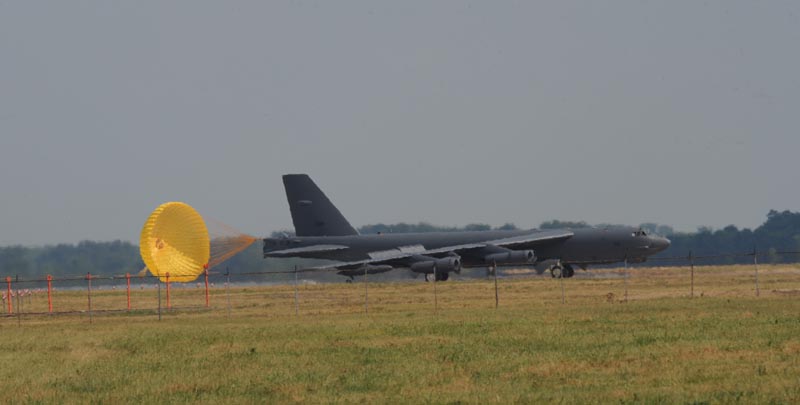
61-0021 preparing for takeoff with two D-21 drones and their rocket boosters - Lockheed photo via Tony Landis
61-0021

61-0021 preparing for takeoff with two D-21 drones and their rocket boosters - Lockheed photo via Tony Landis
After the death of Ray Torick and the loss of the second M-21, all D-21 launches were made from Boeing B-52H bombers. 1021 was one of two B-52's modified to carry the D-21.   The Marquardt ramjet on the D-21 doesn't even start to function until the vehicle approaches Mach 2. Since the B-52 has a top speed of 0.9 Mach, the drone is attached to a booster rocket to get it to a speed where the ramjet can take over.  In the 1960s, drones were still a developing technology. Of the 21 total D-21 launches, 9 failed to fly more than 300 miles; 3 of these failed to fly even 100 miles. At a launch speed approaching 2,000 MPH, this would indicate the engine either failed to fire, or flamed out just after ignition.  The first "launch" of a D-21B from the B-52H launch platform occured on September 28, 1967, when drone #501 accidentally dropped off the wing of the airframe carrying it. Most of the D-21B test flights carried two drones, one under each wing.  The last 7 flights were completely successful, at least as far as flight operations are concerned; the engine fired and the drone flew successfully. Glenn Chapman was at Beale when the 4200th Strategic Reconnaisasance Wing began operational missions with the D-21. He reports that all flights out of Beale were on B-52s with a single pylon and drone; none of their flights carried the second drone. Ironically, 61-0021 and her sister ship 60-0036 are the only two aircraft in the blackbird program that are not not destroyed or in museums; both aircraft are still in the USAF flying inventory. As of 2013, 61-0021 is operational with the 93rd Bomb Squadron of Barksdale AFB in Louisiana (which is also home to 967).   |
06924 06925 06926 06927 06928 06929 06930 06931 06932 06933 06934 06935 06936 06937 06938 06939 06940 06941 0036 1021
Copyright © 1998-2013 Habu.Org